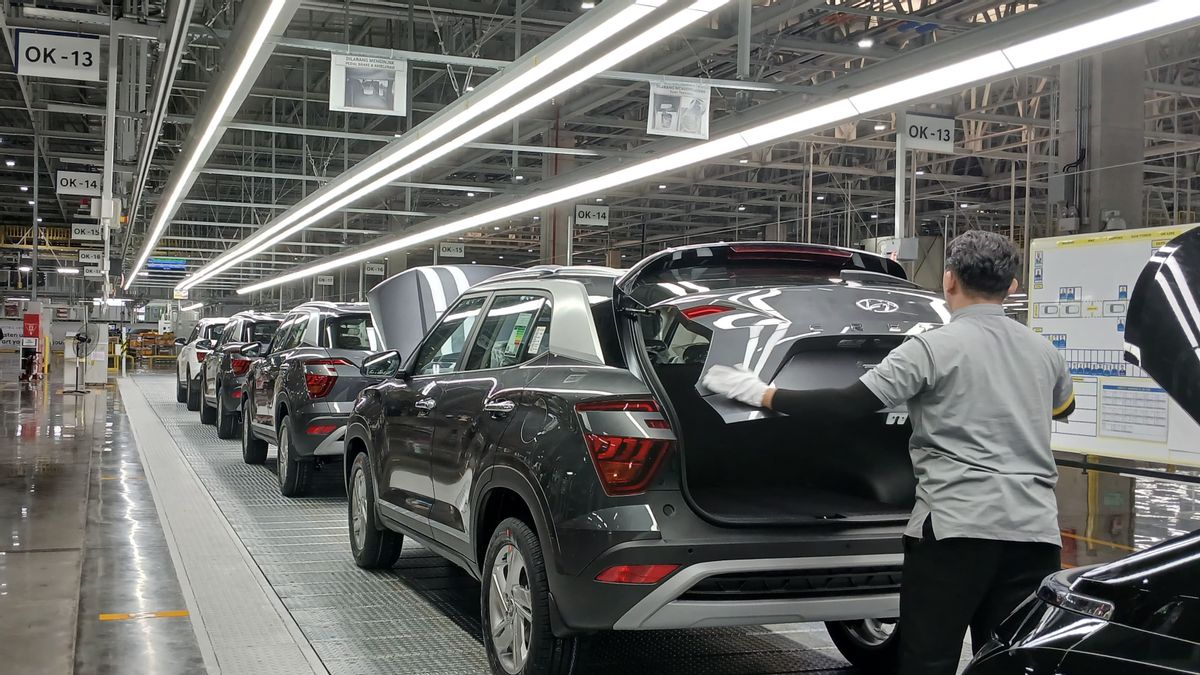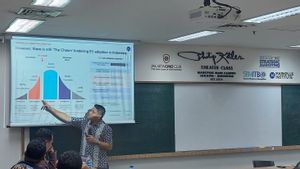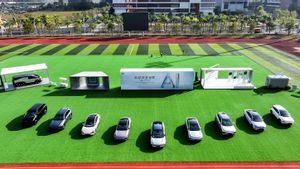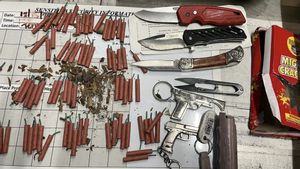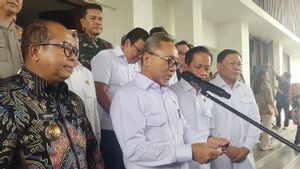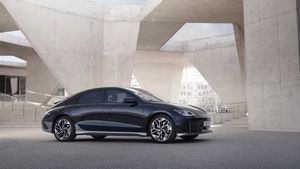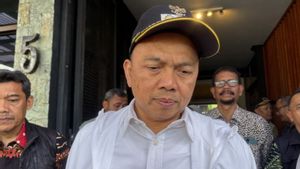JAKARTA - An automotive manufacturer from South Korea, Hyundai is one of the largest automotive players in Indonesia. According to data from the Indonesian Automotive Industries Association (Gaikindo), the brand managed to sell 17,164 vehicles during January-September 2024 in Indonesia and contributed to the market of up to 2.7 percent.
These results cannot be separated from several aspects, one of the important things is the presence of the Hyundai Motor Manufacturing Indonesia (HMMI) factory and the Hyundai Motor Indonesia (HMID) facilities in the form of the Hyundai Training Academy (HTA), Port Installation Option (PIO) & Logistics, and Parts Center which are all located in Cikarang, West Java.
On Wednesday, November 6, media crews including the VOI Team were given the opportunity by the company to see firsthand the vehicle assembly process, logistical preparation, technician training, and the availability of spare parts that have set global standards.
What is the production process and Hyundai's readiness to present its superior products before it is launched to the market, here are the reviews.
Hyundai Vehicle Production Process
Carrying a sustainable concept, the factory presented by HMMI has been designed with environmentally friendly orientation and created a comfortable atmosphere for its workers. Since January 1, 2023, the factory in Cikarang has been certified Renewable Energy Certificate (REC) from PLN because it uses 100 percent electricity from renewable energy.
"We continue to be committed to ensuring that every vehicle produced at the HMMI facility has superior manufacturing quality, in accordance with Hyundai's international standards," said HMMI President Director Bong Kyu Lee in Cikarang, West Java.
The plant includes facilities such as a press shop, body shop, painting shop, engine shop, to an assembly shop. This combines cooperation between robotic technology and qualified human resources.
This place also has a driving test area as a vehicle road test facility that has just come out of the production process.
According to HMMI, this factory with an area of 77 hectares and 18 hectares of land can produce a total of 150,000 units per year and can be increased to 250,000 units per year. This is a combination of ICE, EV, and Hybrid vehicles.
SEE ALSO:
Complete Examination Through PIO
Cars that have passed the production phase will be put into the PIO process managed by HMID. In this facility, vehicles will undergo strict testing, including component inspection and battery testing to ensure quality before being distributed.
Another interesting thing is that this place also supports diversity in the work environment by employing 13 percent of female workers who have been selected because they have a higher level of accuracy in each examination.
"We employ female workers because they have a higher level of accuracy in checking vehicles," said Head of PIO & Logistics HMID, Budhi Arifani in his explanation to reporters in Cikarang, West Java.
According to the company, the PIO facility has a stockyard capacity of 1,900 units. The PIO Division runs the final process before the vehicle is distributed such as the installation of accessories, film glass, as well as a thorough inspection.
Hyundai Training Academy Facility
This place is a forum for local technicians to the regional level of ASEAN and a sales team to get comprehensive training to maintain consistent service standards and to know the latest technologies, including EVs.
With the location adjacent to the Hyundai factory, this place ensures that participants study the latest technology, especially a number of the latest models.
"To standardize knowledge, especially EVs, all instructors here have been certified by Hyundai Motor Asia Pacific," explained HMID's Head of Technical Training, Ardi Kurniawan in his explanation to reporters.
High Quality Parts Share
The manufacturer has also set high standards in all aspects, including aftersales services. HMID has a 1.2 hectare Hyundai Parts Center facility that guarantees the availability of spare parts in Indonesia by storing more than 30,000 items.
This 'Parts Center has kept various spare parts ranging from imports from Korean and Indian countries, to local ones consisting of 79 domestic suppliers,' explained HMID Head of Parts Department, Tony Hardiyanto.
Then from this facility, spare parts from the Parts Center will be distributed to 110 3S standard dealer networks, 200 more than local partshops, and 17 countries around the world.
"We export to 17 countries divided into five regions, namely ASEAN, Middle East, Africa, North America, and South America," said Tony.
Until now, 97 percent of the spare parts volume of Hyundai products is guaranteed availability for customers.
The English, Chinese, Japanese, Arabic, and French versions are automatically generated by the AI. So there may still be inaccuracies in translating, please always see Indonesian as our main language. (system supported by DigitalSiber.id)
